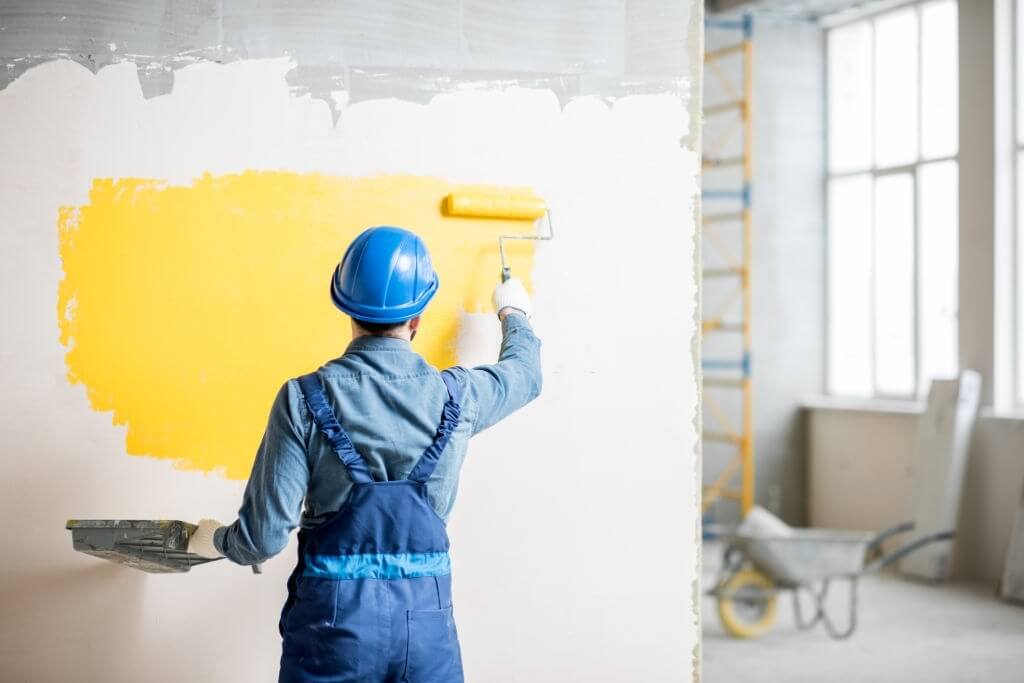Adding a fresh coat of paint to your home can help retain or increase the value of your property, offer optimum protection to your asset, increase curb appeal, and remind you that home ownership is something to be proud of.
Painting the inside of your house is generally a job that can be performed all year round, even if it may take a little longer to dry in the colder months. The exterior of your house, however, is a different story. Painting the outside of your house can often feel like a gamble, prompting people to choose the dry, hotter periods during summer as their best bet.
However, is the peak of summer the best time to paint the exterior of your house? Read on to find out.
What is the best time to paint your house?
When discussing the best time to paint the exterior of your home, the peak of summer may seem like an obvious answer. However, this is a loaded question, as this depends on where you live and in what climate.
Summer may be a good answer for most temperate climate regions that experience four distinct seasons. However, in tropical regions, like far North Queensland in Australia, there are only two seasons, wet and dry, wet being the South’s summer, which brings scorching, dry heat and hot winds.
The wet season in the North brings heavy rainfall and 70%+ humidity for extended periods in the tropics. However, if we travel 3000km down to South Australia, the opposite is true. In this region, summer can yield full weeks of 104°F+ (40°C+) and experience very low humidity levels.
While this might sound ideal, this can create conditions too dry and hot for painting, ruining all your hard work. Read on to find out why.
The best outdoor painting conditions
When it comes to painting outside, the weather can have a wry sense of humour. You wake up to a perfect blue sky and the ideal climate, only to be mocked several hours later by wind and rain, often while still on the ladder or rooftop.
While we could spend hours discussing the perfect conditions for painting in each climate, we will focus on temperate climates with four distinct seasons.
Painting in the wet
While it may be evident to many why painting in the wet is a bad idea, it is still worth looking deeper into the reasons why.
Although painting in the wet is never a successful endeavour, the negative results can differ depending on the paint used. For example, water-based acrylic will wash away or streak as it does not have a chance to adhere, dry and seal.
While it may not wash off as quickly, an oil-based paint will streak, peel, and often turn milky. In addition, neither water-based nor oil-based paint will stick to a wet surface, making the whole activity a waste of time and money.
Too hot, too dry
While warm, low humidity conditions may be the best time to paint your home, if it is too hot and dry, the paint can dry too fast, leading to potential cracking, flaking and reducing adhesion.
Painting in these conditions can also create a safety hazard. For example, you will often be painting on a ladder or the rooftop, where the chance of a fall due to heat exhaustion increases significantly and could lead to severe injury or even a fatality.
The perfect conditions
With all this information considered, we can conclude that the peak of summer in some temperate regions is not the answer; however, summer does win as the ideal time.
While house painters may have slightly differing opinions about which side of summer is best, the general consensus seems to be that early summer or early fall (autumn) is the best time of year for exterior painting.
This period in temperate climates offers the most ideal and predictable weather conditions. This may be less predictable in tropical climates; however, the dry season for your region will be your best window of opportunity.
What is the best type of paint for external house painting?
DIY home renovators often take their time to choose the paint colour but do not spend enough time ensuring they pick the best paint for their home’s structural materials, climate and weather conditions.
There are numerous water and oil-based paints used on houses, including:
- Enamel
- Latex
- Acrylic
- Acrylic latex
- Acrylic enamel and more
There are also specialty paints, such as anti-mold or anti-mildew, fire retardant, and anti-condensation.
Oil-based paints are often the longest-lasting and offer the most coverage, but they can also be expensive and may leave a sheen. On the other hand, water-based paints achieve lower sheen and are cost-effective but probably require reapplication sooner.
There are also guidelines as to which paint is best on which surface, be it brick, timber, weatherboard, stucco or otherwise.
Even though learning about paint for many may seem about as fun as watching it dry, having a deeper understanding of paint and its attributes will arm you with valuable knowledge to make the best decisions for your home’s maintenance.
If you want to become a paint expert, sign up for our House-Painting-Info newsletter, and take more control over your home maintenance.


